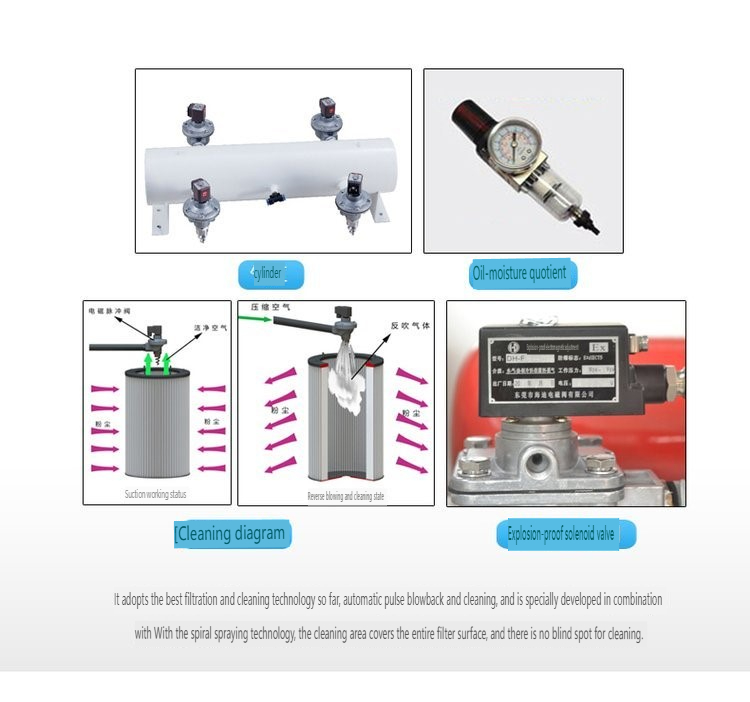The lithium battery production process involves over 50 steps, including mixing and homogenization, coating, rolling, slitting/die-cutting, stacking/winding, assembly, electrolyte injection, sealing/welding, and packaging. Dust pollutants are generated during multiple stages such as mixing, slitting, stacking/winding, and sealing/welding. Airborne dust and fumes not only pollute the working environment but also compromise battery safety and stability, while increasing risks of fires and dust explosions.
1. Mixing and Packaging Dust Control
Mixing, the first and critical step in material preparation, includes batching, mixing, discharging, and packaging. These processes generate fine powder emissions. Failure to address this promptly risks contaminating the workshop, creating explosion hazards, and endangering workers. For such flammable/explosive dust, Explosion-proof Industrial Dust Collector with high air volume and dust collection hoods at generation points are essential for safe and effective dust capture.
2. Tab Ultrasonic Welding Fume Treatment
Ultrasonic welding uses high-frequency vibrations to fuse multiple tabs under pressure, generating fine copper/aluminum dust. Untreated, this dust affects product quality (e.g., short circuits) and pollutes the workspace. Explosion-proof Industrial Dust Collector with anti-static coated filter cartridges, pulse-jet cleaning systems (to prevent clogging), and pressure relief membranes ensure safe and efficient dust removal.
3. Electrode Rolling Dust Management
Post-coating, electrode sheets undergo rolling to enhance energy density. Residual powder on the sheet surface impacts rolling quality. A Multi-point Dust Recovery System is required for both sides of the sheet, converging into two main collection ports (φ100mm). Compact dust collectors can be installed near ports to minimize piping.
4. Slitting Dust Control
During slitting of trimmed electrode rolls, excess powder accumulates on equipment, affecting longevity. Dust collectors with manual rotary vibration cleaning effectively capture particles. Rotating handles clear filter cartridges, preventing blockages from dust buildup.
5. Laser Die-Cutting Dust Treatment
Laser tab cutting generates unusable scrap and fine dust that clogs filters. A Scrap Recovery System compresses and recycles waste, while Medium-pressure Dust Collectors handle laser-generated dust to protect product quality.
6. Winding Machine Dust Control
Winding produces fine dust and smoke, contaminating the workshop and compromising product integrity. High-vacuum Industrial Vacuum Systems with small-diameter pipes ensure immediate removal of particles and fumes.
7. Stacking Machine Dust Management
Stacking battery cells generates micro-dust on surfaces, degrading cell performance. High-vacuum Plate-frame Dust Collectors with localized suction hoods effectively eliminate surface contaminants.
8. Aluminum Casing Welding Dust Treatment
Laser welding of aluminum casings (e.g., covers, seals) produces sparks, dust, and minimal fumes. Explosion-proof Industrial Dust Collector with anti-static Toray-coated filters, pulse-jet cleaning, and pressure relief membranes ensure safe operations.
9. Module Laser Welding Fume Control
Laser welding of battery module connectors generates sparks and fumes. Explosion-proof Industrial Dust Collector with identical safety features (anti-static filters, pulse cleaning, pressure relief) protect product quality and workshop air.
Post time: 07-03-25





